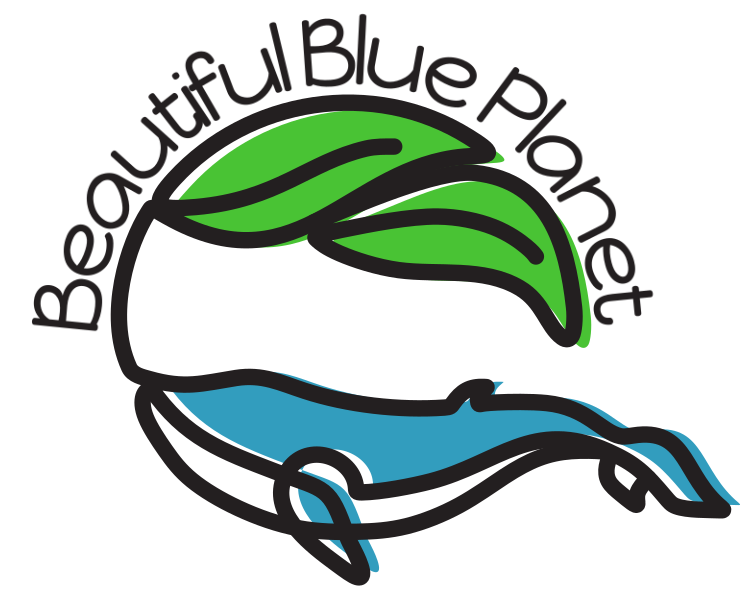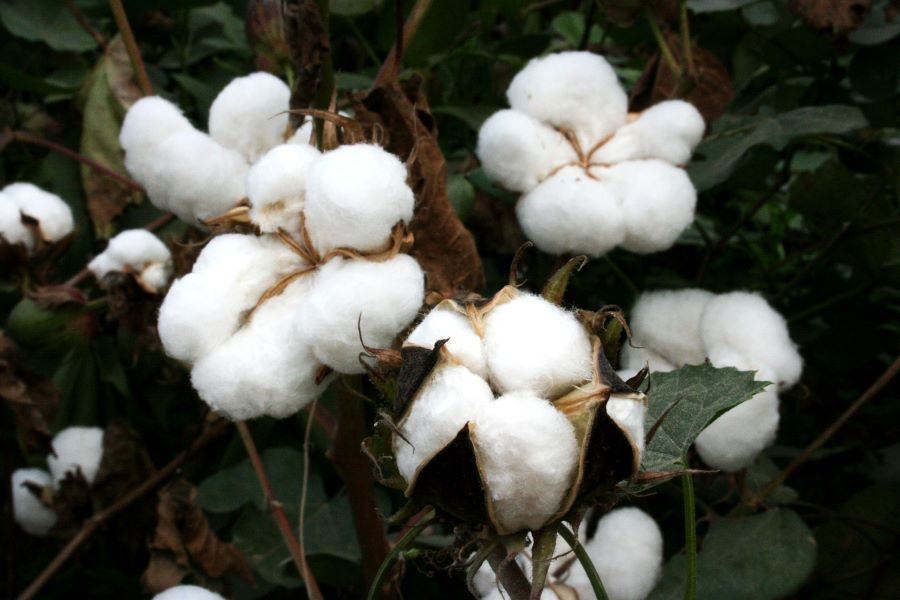This page contains affiliate links
Cotton has gotten a bad rap because of the growing practices involved. Yes, cotton has left a legacy of exhausted soils and poisoned water, air, and people. And this has led to the idea of shunning cotton and embracing synthetic fabrics instead.
But synthetic fabrics also leave a legacy, one of microplastic pollution. At least 35% of microplastic pollution comes from plastic microfibers. These microfibers are broken off synthetic fibers by washing and more so just by wearing them. They are not biodegradable.
They end up all over the earth and get taken up by all forms of life, including plants. They end up in the ocean where they slowly get carried and piled up in deep ocean spots where the ocean water feeds important biological hotspots. Places where ocean biodiversity is generated. See my article about where all our microfibers end up in the bottom of the sea.
We don’t yet know the all the effects of these mass accumulations of non-biodegradable fibers. But they are entering the food chain throughout the planet and at every level. See my article about how microfibers get into groundwater and plant roots .
So let’s take another look at cotton and see why it’s a good choice and how it can be a very wise environmental investment.
Cotton farming uses pesticides like all conventionally farmed crops do
Cotton has been a staple fiber for thousands of years. It was first cultivated in India some 5,000 years ago. It’s a beautiful, comfortable, absorbent, natural fiber. And it’s fully biodegradable!
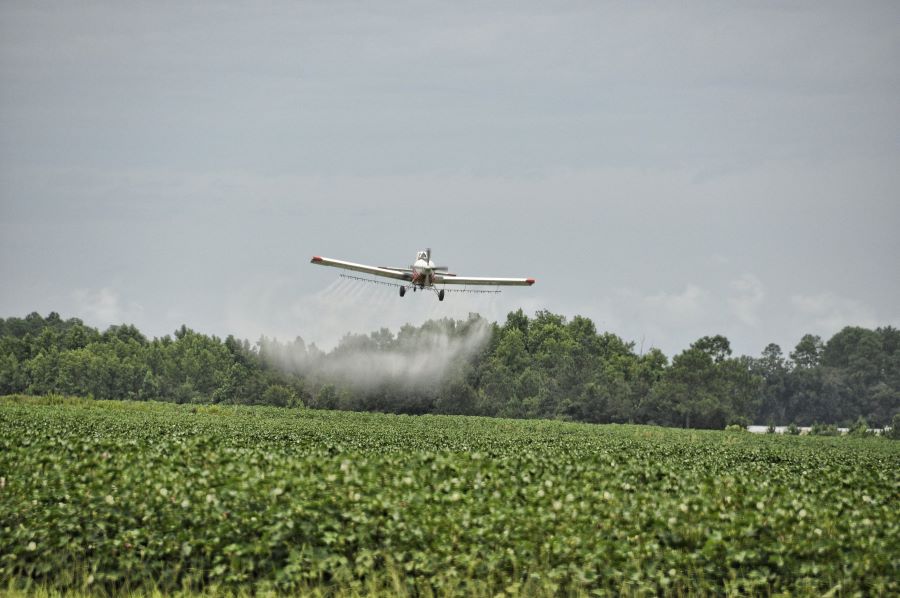
When we look at cotton, we should be fair and compare it with all the other conventionally produced agriculture products, like the corn and soy that feeds animals for meat, wheat, sugarcane, rice, and more that use pesticides.
Even non-organically grown strawberries, spinach, kale, peaches, pears, and seven other commonly eaten cops are found to have the highest pesticide residue on them when they’re purchased compared to other produce, sadly. See the EWG’s 2023 Shopper’s Guide to Pesticides in Produce.
These crops show that conventional agriculture is highly dependent on pesticides and herbicides to bring abundant produce to market. This is why when you buy organically grown foods you’re not only bringing home food that’s pesticide-free but you’re also supporting organic farming practices. Which benefits everyone and the planet.
Cotton is moving in a more sustainable direction
The cotton industry is responding to the need to adopt more sustainable farming methods. It’s been accused of using too much water and using too many pesticides. And there are some environmental disasters that taint it’s reputation.
But the cotton industry and its partners have been doing research and helping farmers transition to more sustainable methods—methods that reduce water consumption and reduce pesticide use, and improve soil quality. And some farmers are transitioning to organic and to regenerative agricultural practices.
These days where fast fashion has gained momentum and it’s use of synthetic fibers has surpassed natural one, the dangers of synthetic fiber compels us to think again on how to choose natural fibers.
Cotton doesn’t need all the water you may have heard
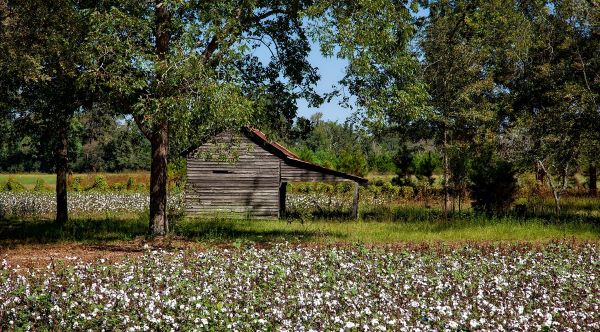
Cotton is actually a drought-tolerant plant. It has a very large tap root that can seek out and hold water for lean times. It also has the ability to stop growing during a lean time and resume when water is available again.
Of the roughly 12.5 million acres of cotton planted in the US, 64% grows on rainfall alone, 31% gets supplemental irrigation, and 5% is fully irrigated.
US cotton is grown in most of the southern states with Texas being the largest producer. California and Arizona grow much less cotton, and with their dry summers, this is where full irrigation is needed.
Cotton farmers, like all farmers, are businesspeople and they need to keep costs under control. Recent technological developments have enabled many cotton growers to use less water with very precise methods to deliver water right where and when it’s needed.
The cotton industry research and marketing company, Cotton Inc., and its partners (like Ralph Lauren and others), provide research and help for farmers to use newer technologies. And they’re helping farmers adopt more organic and more regenerative agricultural practices, like low and no-till, to reduce costs and improve soil quality. Better soil quality means better water absorption and retention.
Historically high pesticide use in cotton growing has dropped significantly
I’ve always heard that cotton was one of the heaviest users of pesticides. I looked it up for some numbers to compare crops and only came a USDA report from2009. A lot has changed since then but many of our opinions about this issue may have come from those older practices. But here’s what I found:
In a chart showing the top 72% of pesticide using crops, the first crop is corn, at 39.4% of all crop pesticide use. Soybeans at 21.7%, potatoes at 10.2%, and then, cotton at 7.3%. (See Pesticide Use in U.S. Agriculture: 21 Selected Crops, 1960-2008, pg. 6)
This doesn’t account for the total acreage of each crop. But it’s wise to keep cotton in perspective with other crops. By the way, most of the corn and soybeans go to feed meat animals.
But the cotton industry in the US has been lowering pesticide use by using integrated pest management (IPM) strategies like; crop rotation, pin-pointed pesticide needs, and catching pests early to prevent whole field spraying; and by thwarting the most significant cotton pests with new varieties of cotton that resist or kill them. Namely Bt cotton.
…”the pounds of pesticide applied to cotton has trended downward due to the replacement of DDT and other older insecticides with more effective products, the eradication of the boll weevil, and the adoption of Bt cotton. Cotton accounted for just over 7 percent of the total pesticide pounds applied while wheat accounted for less than 5 percent in 2008.”
USDA Pesticide Use in U.S. Agriculture:
21 Selected Crops, 1960-2008
As a result, cotton farmers in the US have reduced pesticide use significantly. According to Cotton Today pesticide use has been reduced by 66% between 1999 and 2019.
But globally, it’s a different story
According to Earth Justice, “Cotton accounts for just 2.4% of the world’s cultivated land but uses 6% of the world’s pesticides and 16% of its insecticides”. All of these chemicals harm the workers and local residents, the surrounding ecosystems, pollinators and birds, pollute water, and leave the land with deteriorated, exhausted soils. As does all of conventional agriculture.
For the devastating legacy conventional cotton growing had on the Aral Sea, causing it to dry up and poisoning the land, see this YouTube video: “The Dried Up Aral Sea Eco-Disaster”.
Use of pesticides and its effects on land and people is why organic cotton farming is on the rise. As organic practices have taken hold over the past several decades, and as consumers have sought organic foods for both health reasons and out of concern for the environment, so has the cotton fiber industry sought to consume less resources and to change to practices that are healthier for the environment.
Cotton is vulnerable to pests which had driven the use of pesticides. Since cotton is grown in large monoculture fields, they’re more vulnerable, there’s a less diverse ecology so that there are few predatory insects that can keep the pests under control, due to reduced appropriate habitat.
More farmers are adopting IPM practices in their fields now. The cotton industry has been partnering with researchers and funders to help lead the global farming community out of the high input methods and into more sustainable growing practices.
Organic cotton farming is on the rise…because of caring customers

Credit: David Mark via Pixabay
Since we don’t eat cotton we may not want to pay more for the organic cotton products. But organic and, as you’ll see, regenerative agricultural methods can be profitable for farmers and actually do help the planet.
Research and funding from the U.S. Regenerative Cotton Fund and its supporters, is helping cotton farmers transition to regenerative methods. These methods include: cover cropping , which helps fix nitrogen and add organic matter to the soil and low to no tilling, which helps keep life in above the soil robust and healthy.
A group of cotton farmers that were part of a pilot program were mentored to use regenerative agriculture on their farms. The results showed an increase in yield due to increased soil fertility, an increase in crop resiliency from weather extremes, higher water quality was observed, and an increase in net income. Read about the project in The Economics of Soil Health Management on Five Cotton Farms.
These practices involve more manual labor and that drives up the cost. And during the transition period of three years, yields are much lower than with conventional agricultural practices. Less yield means there is less available, so the price is higher.
Paying more for organic food helps keep you and your family free from pesticides plus it helps make farming be more environmentally friendly. Likewise, paying more for organically grown cotton makes cotton growing more environmentally friendly and even restorative to the earth. As in regenerative growing…
Regenerative practices can help restore damage
Organic growing had the original intention, several decades ago, of taking good care of building the soil, understanding and applying integrated pest management (IPM), and using manual labor to handle the weeds rather than using herbicides.
But with regulations around using organic as a label many farmers have been using the minimal practices to be certified organic. Soil building isn’t always applied rigorously. This is my opinion as I’ve watched the organic movement and grown have organically over the years. And I get it. Farming is a hard business and we can’t always be perfect or do all the good we’d like to.
So along came regenerative agriculture which makes use of many soil building strategies like low to no tilling and cover cropping. And it uses IPM and all the other things that organic agriculture set out to do.
This approach to agriculture has the benefit of building soil quality and sequestering atmospheric carbon dioxide….improving soil nutrition, improving water infiltration and retention, and reducing climate warming gas. Which makes this method the best way to go all around.
Meanwhile, we as consumers need to buy from the growers that farm the way that’s best for the planet.
There are certifications that show you’re getting eco-friendly cotton
The use of the terms are legally controlled, so there are certifications a that a producer needs to get for their farm products.
OCS, the Organic Content Standard, from the Textile Exchange or GOTS, Global Organic Textile Standard are the two certifications to look for when buying cotton goods.
There are three year transition periods while cotton growers move into full organic status. It’s called in-conversion, and supporting these growers is good to get them higher prices so they stick to their organic conversion. But this may not always be clear to the consumer.
So there is the potential for cotton growing, as well as all farming, to really help heal the planet. But we need to increase demand for organic or regenerative fibers with our spending dollars.
The next biggest benefit to using cotton and eco-friendly cotton
Cotton is 100% biodegradable.
Even once the sloughed off fibers end up in waterways, they biodegrade. If a fabric is part cotton and part synthetic, the cotton part biodegrades. The synthetic fabric eventually breaks down into smaller and smaller pieces…but it then enters soil organisms, plant roots, and water life. See more on this in my article Septic Systems Keep Microfibers Out of the Environment, Right?
We need Slow Fashion
So perhaps what we need is to adopt a practice of slow fashion—not fast fashion. Buy less, buy better, and wear everything for a longer time, and buy the items that support the best practices for the planet, giving us the best value for our dollars and the best power to help the earth.
This benefits our children, plain and simple. Look at any child and ask yourself if you are doing all you can so they can have a healthy life.
So, is cotton bad for the environment? Not as much as it used to be, and it can get much much better if we buy the best grown cotton.
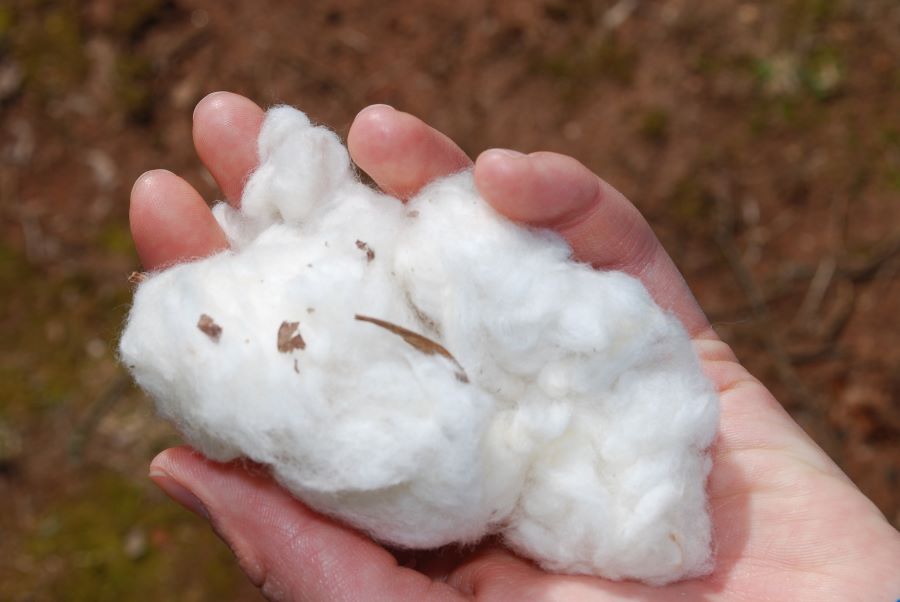
See this film
Go see the new film Common Ground to learn more about regenerative agriculture and all its benefits. The link gives you the places to see it, a trailer to watch, and you can purchase tickets.
Resources for Organic Cotton Clothing:
Pact: Women’s clothing made with organic cotton: Camisoles are offered here, but they offer more on their website.
Fair Indigo: Organic and fair trade cotton clothing for mane and women.
Maggie’s Organics: Men’s and Women’s organic cotton and wool socks, plus underwear, leggings, and a throw.
Maggies Organic Cotton Socks: High GOTS certified cotton content, biodegradable and recyclable packaging, and safe dyes.
Conscious Step Socks: GOTS certified socks through Earth Hero, and shipped with no plastic packaging
Related Reading:
Natural Fibers vs. Synthetic Fibers, Which are Better and Why
Just Stop Wearing Plastic Clothes
Wash Less & Wash Better to Reduce Microfibers and Save Your Clothes
Buy Less Clothing, Reduce Your Wardrobe’s Microfiber Pollution-Here’s Why
Two Powerful Ways Soil Soaks Up Carbon Dioxide Here’s why organic and regenerative farming will help our climate emergency.
